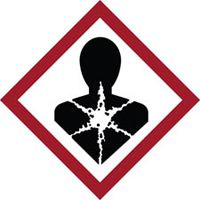| The Home page of ILPI's Safety Data Sheet (SDS) Resource, the leader in SDS information since 1995! | |
| The history and philosophy behind this resource. | |
| A curated collection of books and reference materials concerning Safety Data Sheets and closely related topics. | |
| Paste your plain text SDS into the SDS-Demystifier, and it will be converted into a hypertext-enriched document with links to detailed explanations of each key term. | |
| An extensive list of frequently asked questions about Safety Data Sheets including regulations, content, compliance, and more. | |
| A humorous take on Safety Data Sheet jargon. Fill in the blanks on our entry form to generate a personalized Unsafety Data Sheet to share with your coworkers. | |
| Since 1995, we've maintained this massive curated list of the best places to find Safety Data Sheets on the Internet. | |
| You are here! Way more than a glossary, this hypertext-enhanced resource covers hundreds of SDS-related terms and expert knowledge. Each entry includes both the SDS relevance and links to additional authoritative resources. | |
| Archived results of Safety Data Sheet related polls taken by some of our millions of site visitors | |
| The OSHA regulations behind SDS regulations, including the inspection guidelines and over 400 official interpretations letters under the Hazard Communication Standard | |
| Commercial suppliers of SDS authoring and management software as well as cloud compliance services. | |
| Commercial companies that will create SDS's for your specific needs as well as SDS translation companies. |

Safety signs, banners, and scoreboards? Get yours at Safety Emporium!
Definition

Get your GHS-compliant labels and signs from Safety Emporium.
A teratogen is an agent that can cause malformations of an embryo or fetus. This can be a chemical substance, a virus or ionizing radiation.
This is closely related to a fetotoxin, an agent that causes poisoning effects on a developing fetus.
Both fetotoxins and teratogens are reproductive toxins, substances which cause damage to one's reproductive and/or endocrine system and/or a developing fetus.
Additional Info
Pregnant women should avoid all contact with teratogens, particularly during the first three months of pregnancy, as this can result in damage to the developing child. For example, alcohol is a teratogen and drinking during pregnancy can lead to a child born with fetal alcohol syndrome.
Many drugs can also have an adverse effect on developing fetuses, the most infamous example being thalidomide. This drug was originally used to control morning sickness, but was withdrawn from the market after it was discovered to cause limb and other developmental deformities. It is now on the market again for various ailments, with very prominent warnings about its fetotoxicity.
There are few examples of transplacental carcinogens, substances which can cause fetuses exposed during pregnancy to eventually develop cancer. The best-known example is DES, diethylstilbestrol, a compound formerly used to prevent miscarriages before its trans-generational carcinogenic activity was known.
SDS Relevance
Section 11 (toxicological information) of a Safety Data Sheet will list if a substance is a known teratogen, fetotoxin, carcinogen etc.
The only truly safe way to work with teratogens is to NOT work with them. Eliminate them from your workplace or find a less hazardous alternative. Take a holistic approach to workplace protection and remember that the last line of defense, personal protective equipment (PPE), should never be relied upon as the primary method to protect oneself!
Always minimize the use and release of teratogens (or believed teratogens) in the workplace. Women who are of child-bearing age should pay particular attention to teratogenic materials because they could be pregnant without knowing it and expose their fetus. Teratogens typically cause their most severe damage during the first 3 months of pregnancy, a period during which many pregnancies are not yet known. Many teratogens cause effects at very low exposure levels.

Get your PPE such as made in USA NIOSH-approved N95 masks from Safety Emporium.
Further Reading
- OSHA's page on reproductive hazards with additional resources, evaluation, controls, standards and more.
- OSHA's Occupational Chemical Database lists the known health effects of a number of chemicals.
- The March of Dimes seeks to reduce birth defects and infant mortality.
- Healthline has a list of list of known teratogens.
- Teratogens by Chanapa Tantibanchachai in the The Embryo Project Encyclopedia.
- Teratogens in the Medicine LibreTexts collection.
- Fetal Alcohol Spectrum Disorders (FASDs) at the US CDC.
See also: clastogen, mutagen, carcinogen.